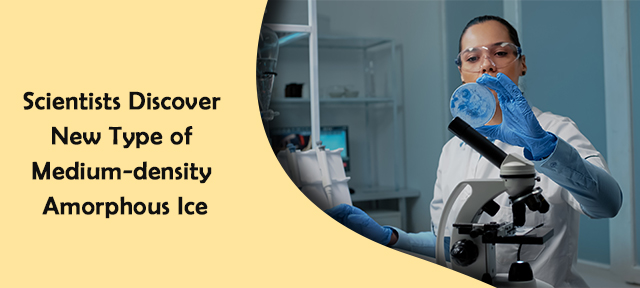Scientists at University College London have created a new type of ice, called medium-density amorphous ice that matches the density and structure of water. This new discovery may lead to the ability to study water’s mysterious properties. The ice was created by shaking regular ice in a container with centimetre-wide stainless-steel balls at temperatures of –200 ˚C. The new form of ice could open up a new chapter in ice research and have implications for the potential habitability of liquid-water oceans on moons.


